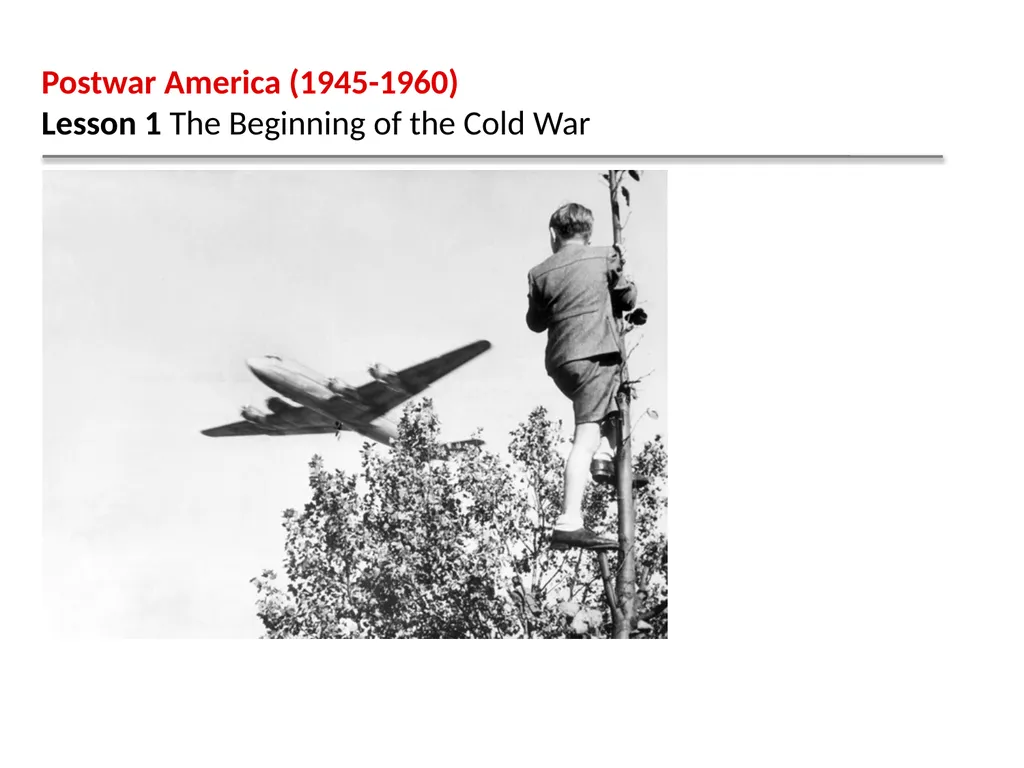
Postwar America (1945-1960) Lesson 1 The Beginning
Author: min-jolicoeur | Published: 2025-07-18
Description: Postwar America (1945-1960) Lesson 1 The Beginning of the Cold War Learning Objectives Trace the reasons that the wartime alliance between the United States and the Soviet Union unraveled. Explain how President Truman responded to Soviet
Download Presentation
Download the PPT/PDF: Download
Transcript:
Loading transcript…